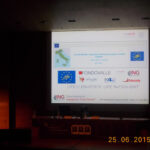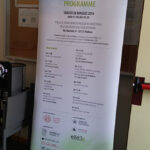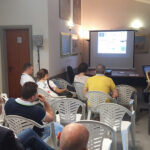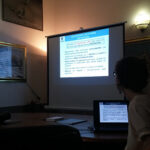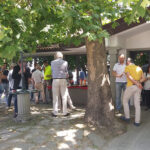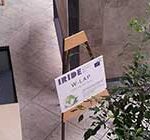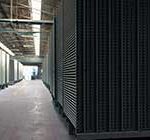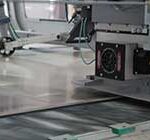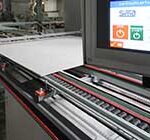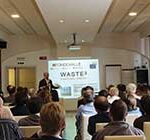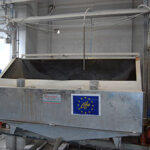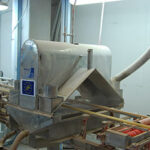Life
LIFE is the EU’s financial instrument supporting environmental and climate action projects throughout the EU.
The general objective of LIFE is to contribute to the implementation, updating and development of EU environmental and climate policy and legislation by co-financing projects with European added value.
LIFE began in 1992 and there have been four phases of the programme: LIFE I, LIFE II, LIFE III and LIFE+. During this period, LIFE has co-financed 3954 projects across the EU, contributing approximately €3.1 billion to the protection of the environment.
EU Regulation no. 1293/2013 launched the fifth phase of LIFE for the period 2014-2020. The European Commission (DG Environment and DG Climate Action) manages the LIFE programme together with the Executive Agency for Small and Medium-sized Enterprises (EASME).
The LIFE programme is divided into two sub-programmes: environment and climate action.
The Environment Sub-programme includes three priority areas:
- Environment and resource efficiency;
- Nature and biodiversity;
- Environmental governance and information.
The Climate Action Sub-programme includes three priority areas:
- Climate change mitigation;
- Climate change adaptation;
- Climate governance and information.
The general objectives of the new LIFE programme can be summarised as follows:
- To contribute to the shift towards a resource-efficient, low-carbon and climate-resilient economy, to the protection and improvement of the quality of the environment and to halting and reversing biodiversity loss, including the support of the Natura 2000 network and tackling the degradation of ecosystems
- To improve the development, implementation and enforcement of Union environmental and climate policy and legislation, and to act as a catalyst for, and promote, the integration and mainstreaming of environmental and climate objectives into other Union policies and public and private sector practice, including by increasing the public and private sector’s capacity
- Support better climate and environmental governance at all levels
- To support the implementation of the 7th Environment Action Programme (Decision no. 1386/2013/EU of 20/11/2013) “Living well within the limits of our planet”
For further information on LIFE visit the LIFE site or the Ministry of the Environment site (National Contact Point for Italy)
-
[Life:RETSW-SINT]
GREENING THE WORLD
RETSW-SINT
The LIFE ReTSW-SINT project was born from a group of environmentally conscious companies and universities that seek innovative solutions to mitigate and reduce the environmental impact of industrial activities.
The companies and universities involved are:
Ceramica Fondovalle s.p.a.
Fritta Italia s.r.l.
Turbocoating s.p.a.
K4Sint s.r.l.
Majorca s.p.a.
Università degli Studi di Modena e Reggio Emilia
The main aim of the LIFE ReTSW-SINT project is to demonstrate the feasibility of valorising and recycling different types of thermal spray waste into high value products for industrial and residential use. The project has received the financial support of the European Union through the LIFE+ programme, thanks to the environmental importance of the project and to the possibility of transferring it to other companies.
-
Download
Notice board
Pieghevole
Layman's Report
After - LIFE Plan
INSTM Poster -
INNOVATIVE ACTION AND ASPECTS
- The project was implemented by carrying out the following main actions:
- Characterisation of spent thermal spray powders and definition of usable separation techniques;
- Definition of chemical and physical pre-treatments necessary to make the powders compatible with the vitreous matrices (frits and glazes);
- Development of a waste powder separation system according to composition, particle size and morphology;
- Characterisation of separated and pre-treated spent powders;
- Development of innovative frits, modified with different percentages of the recovered spent powders and the addition of glass formers, first on a laboratory scale and then on a semi-industrial scale with a pilot line;
- Development of innovative glazes, modified with the direct addition of the spent powders or of the new frits, first on a laboratory scale and then on a semi-industrial scale with a pilot line;
- Application of new frits and glazes, firing and characterization of thermal and dilatometric properties, on a laboratory scale;
- Preparation of the ceramic base (mixture composition, slip) to achieve full compatibility with the new frits and glazes;
- Development of a demonstration pilot plant for the production of new frits and glazes, using industrial systems;
- Development of a demonstration pilot plant for the production of ceramic tiles using the new frits and glazes, using industrial systems;
- Definition of recovery procedures for polished/lapped tiles and methods of recovery of powders abraded during polishing/lapping of the glazes;
- Sintering of ODS (Oxide Dispersion Strengthened) composites using SPS (spark plasma sintering) technology, directly from the spent powders and optimization of the process, to obtain very high density and low density products, for different uses;
- Characterization of all types of products obtained and LCA of the new products and process.
-
Links & contacts
Links
LIFE website (European Commission)
LIFE website (Ministry of the Environment)
website of the partner UNIMORE
website of the partner Fritta Italia
website of the partner Turbocoating
Contacts
Project manager: Vito Antonio Remigio
Dissemination manager: Luisa Baraldi
Administrative-financial manager: Roberto Mantovani
-
Eventi
Fondovalle took part in the following trade fairs, with its own booth, during which it presented the LIFE ReTSW-SINT project, distributed information material and illustrated the objectives:
- CERSAIE 2015 was held in Bologna from 28 September to 2 October 2015
- COVERINGS 2016, took place in Chicago from 18 to 21 April 2016
It also participated in the “Welcome to the LIFE Programme” event organised on 23/05/2015 and on 28/05/2016 by the University of Padua, which was held in the Department of Engineering, during which the project objectives were illustrated and information material was distributed.
Finally, it took part in the final project event, carried out jointly with La Borghigiana S.r.l. of the LIFE12 ENV/IT/419 project, held at the headquarters of La Borghigiana on 30/06/2016.
Some photos of participated events.
CERSAIEEVENTI UNIMORE
PADOVA 2015
PADOVA 2016
EVENTO FINALE
-
Goals and results
The main aim of the project was to demonstrate the feasibility of valorising and recycling different types of thermal spray waste into high value products for industrial and residential use.
On the basis of the type of powders and their morphology, the project aimed to create demonstration products, such as frits, glazes, glazed tiles and sintered parts, containing up to 100% of spent powders.
We concentrated on two classes of powders: corrosion-resistant alloys, such as NiCoCrAlY, and ceramic materials resistant to abrasion and high temperatures, such as Alumina and Zirconia, which at present, due to problems of contamination and loss of spherical morphology, are transformed into hazardous waste after only one or a few uses.
The project, which has been regularly completed, has achieved the following main results:
- “zero-waste” approach at thermal spraying plants through the reuse and valorisation of the powders in SPS or in the ceramic sector, using 100% of waste produced. This has been achieved with Alumina and Zirconia, while we encountered major problems with the NiCoCrAlY powders (which, however, represent a minimum percentage compared to the other types of waste);
- Separation of waste directly at the source: no contamination of the waste flow;
- Recovery of production waste and consequent savings on raw material, equal to about 1 ton/month of spent powder from thermal spraying;
- Development of innovative (ODS tools) high and low density products;
- Development of frits, glazes and glazed ceramic products re-using about 1 ton/month of spent powders from thermal spraying;
-
News
- The project was initially presented by Majorca S.p.A. as coordinating beneficiary; in June 2016, the European Commission officially approved the takeover of Ceramica Fondovalle S.p.A., which had carried out the technical project activities together with the other partners.
- We have set up an information desk at the Fondovalle headquarters, where flyers and other project-related documents are available.
- On 30/06/2016 we took part in the final project event, jointly carried out with La Borghigiana S.p.A., beneficiary of the LIFE12 ENV/IT/419project
- The Project was presented during the 3rd LCA technical seminar held in Reggio Emilia on 29 September 2016 at the premises of the University of Modena and Reggio Emilia.
- A scientific publication has been produced on the activities carried out for the project by UNIMORE on 10 April 2017.
-
REACHED RESULTS
The project regularly ended on 30/06/2016 and permitted to reach some important environmental benefits:
- Waste-management approach from the production site (thermal spraying plants) to the reuse and valorization of the powders in spark plasma sintering or in ceramic firing, absorbing almost 100% of waste produced by the thermal spraying plants, with no solid waste production. Only NiCoCrAlY powders recycling proved to be not completely satisfactory since the application in ceramic tiles would need added studies and demonstrations due to over-heating issues;
- Separation of waste generation at the source: no cross contamination of waste streams occurs;
- Immobilization of harmful contaminants of spent thermal spray powders (mainly heavy metals) in matrixes (glass matrix, ODS composites) which do not leach such elements;
- Absorption of other waste, like recycled glass cullets, for preparation of the glass matrix and to lower softening point;
- Application of low energy consumption techniques for recycling of thermal spray spent powders: rapid, SPS and gas-fired roller kilns in rapid firing cycles.
and some technical and economic benefits:
- Realization of innovative products (ODS tools, low-cost targets for PVD, antistatic and EM shielding tiles, abrasion resistant or anti-slip tiles) currently not available on market or manufactured with much higher costs for starting raw materials;
- Cost savings for spent thermal spray powders disposal;
- Cost savings for supplying refractory ceramic powders by recycling the alumina and zirconia ones.
Regarding the entire project, the comparison between the white frit containing thermal spray waste and the traditional frit shows a reduction of the environmental load of 13.78% with respect to the traditional ones in a LCA perspective.
Concerning the considered environmental indicators it is possible, in fact, to highlight the following aspects:
- the use of frit containing thermal spray waste reduces the use of non-renewable raw materials of 50%;
- no increase of energy consumption during firing the ceramic tiles was observed;
- the emissions in air in terms of kgCO2/kg of frit containing thermal spray waste are reduced of 19.87% with respect to the traditional frit;
- a reduction of 100% transport of raw materials is obtained considering the avoided shipping of ZrSiO4 from Australia or Ukraine (the most important countries in extraction of zirconium) to the industrial plant;
The proposed approach is thus more economical than the current one:
- The reduction of energy consumption in the manufacturing phase (frit containing thermal spray waste vs traditional frits) is 73.7%;
- The reduction of raw material cost (frit containing thermal spray waste vs traditional frits) is 24.16 %;
- The reduction of manufacturing costs per unit of product, considering personnel, energy, plants and transports, is 80.22%.
In general, however, the costs for the production of the product are minor compared to the traditional of more than 80%.
-
THE ENVIROMENTAL ISSUE
The main environmental issue tackled by the project is the treatment of waste, in particular spent powders, produced during the thermal spraying processes. The proposed solution consists in recycling the powders as secondary raw material, in order to replace the common waste disposal procedures, which have a high environmental and economic impact.
Thermal spraying refers to a group of versatile coating technologies that are used to deposit thick (50 μm - >1 mm) layers of ceramic, metallic, cermet or composite materials for a variety of applications in a number of fields, including: the mechanical industry, aeronautics and energy production and the biomedical industry.
The thermal spray processes differ depending on the nature and properties of the gas used and of the environment in which they operate (air, inert atmosphere, vacuum, etc.). Each process is used to deposit certain categories of materials for specific fields of application.
During the spraying phase, a significant fraction (between 50% and 90% of the total) of powder is not deposited on the substrate to be coated: for various reasons these spent powders cannot be used in the thermal spraying process. The global market for these powders was estimated in 2001 at over €2 billion and it increased to €3 billion in 2009 and even more in the following years.
The project focuses in particular on waste consisting of YSZ (Yttria Stabilized Zirconia), used as thermal protection, and NiCoCrAlY, used for its resistance to oxidation.
-
[Life:W-LAP]
GREENING THE WORLD
W-LAP
The LIFE W-LAP project was originated by combining the experiences of two companies operating in the field of ceramics, both of which had received awards from the European Union for their commitment towards the environment thanks to their earlier experiences with the LIFE programme. Both Ceramica Fondovalle and Iride had received the “Best of the Best” award, assigned each year by the European Commission to the best European projects. In developing the project, in addition to Iride, another exceptional partner will be working alongside Ceramica Fondovalle: the University of Padua, which has always paid attention to the environmental impact of industrial activities.
The main aim of the W-LAP project was to solve environmental problems connected with the stage of finishing of flat ceramic surfaces, thanks to the introduction of an innovative additive polishing technology. It received the financial support of the European Union through the LIFE+ programme, which recognised its importance for the environment and its potential for transferring to other companies or similar industries.
W-LAP is an innovative project for the drastic reduction of water consumption and the nullification of levigation sludge production during surface finishing operations on ceramic tiles.
W-LAP is an innovative additive polishing technique.
W-LAP is realised with the contribution of the LIFE financial instrument of the European Union.
W-LAP is GREENING THE WORLD.
-
PHOTO & DOWNLOAD
-
INNOVATIVE ACTION AND ASPECTS
The activities that will be carried out for implementing the project consist, basically, of the following:
Identification of water-based polymers or co-polymers that can be prepared in solid, liquid or viscous forms and that have the required characteristics of transparency and resistance, with the possibility of adding surface modifiers (fluorinated compounds and other functional additives)
Implementation of techniques for depositing these precursors uniformly on ceramic surfaces, either by brushing them on, in the case of solid precursors, or spraying them on at low pressure in the case of viscous liquids
definition of the optimum deposition parameters and of the UV curing time
investigation of the final surface quality in terms of durability, appearance and ease of cleaning
assembly of a demonstration line for continuous treatment of ceramic tiles using this innovative additive polishing process
production of demonstration sets of ceramic floor and wall-covering tiles for indoor and for outdoor and evaluation of possible deterioration during use
definition of the cleaning and maintenance procedures for the end-user
drafting of a mass/energy balance for the new process and its comparison with the state-of-the-art; calculation of the environmental indicators and quantification of the actual benefits, both direct (during production) and indirect (during use and at the end of useful life).In addition to the technical activities described above, the fundamental activities of management and monitoring of the project will be carried on, as well as dissemination in order to circulate the aims and results of the project and to bring the LIFE tool to the knowledge of potential stakeholders.
-
Links & contacts
Links
Università degli Studi di Padova
Ministero dell’Ambiente e della Tutela del Territorio e del Mare
Contacts
Project Manager – Remigio Vito Antonio
Dissemination Manager – Luisa Baraldi
Administrative Manager – Roberto Mantovani
-
Events
Fondovalle was present with its own booth at the Cersaie show held in Bologna from 25 to 29 September 2012, at which it presented the new “W-LAP” project.

Fondovalle was present with its own booth also at the Cersaie show held in Bologna from 23 to 27 September 2013, at which it presented the preliminary results of the “W-LAP” project.

Fondovalle was present at the international COVERINGS show held in Atlanta (USA) from 29th april to 2nd May 2013.
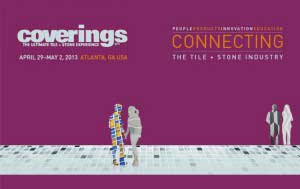
Fondovalle has partecipated to the event organised by the Engineering Department of Padua University the 24th May 2014: during the event, Fondovalle has presented the LIFE W-LAP Project.

-
Goals and results
The main aim of the project was to replace the current surface finishing stage (grinding, polishing, lapping, etc.) of ceramic tiles with an innovative “additive polishing” technology. Instead of removing material, this calls for the controlled deposition of a very thin layer of polymer-based material featuring a suitable light refraction index.
In this way, it was possible to obtain the same aesthetic results achieved by surface finishing of tiles, ensuring, furthermore, optimum and simultaneous sealing of any porosities present on the surface. This therefore makes the tiles easier to clean and more resistant to the proliferation of bacteria, and less water and detergents are required to clean them during use, both out of doors and indoors.
All this was achieved with a process using very little water, without producing grinding sludge and consuming less energy than before. -
News
The 4th August 2012 Fondovalle published an article titled “In this way the LIFE+ financial instruments lead to a more ecologic enterprise” related to the W-LAP Project on the “ItaliaOggi” newspaper.

At the end of the 2012 we have joined the Facebook page “Think Eco Live Green”. The page promotes the LIFE projects and creates the basis for the networking activities. ThinkEcoLiveGreen

We have setup an informative kiosk at our headquarter in which brochure, flyers and layman’s reports about the project are available.
Photo CHIOSCO -
PROGRESS OF THE PROJECT
The technical activities pertaining to the W-LAP project were started, mainly concerning the preparatory activities:
-
- identification of low-friction polymers with water-based precursors, that had to be transparent, UV-curable and stiff;
- implementation of techniques for the uniform deposition of polymer precursors on the surfaces of tiles;
- definition of the optimum deposition parameters and definition of the UV solidifying cycle.
The preparatory activities were duly completed within the planned deadline. The project is concluded and the technical activities were performed:
IDENTIFICATION OF LOW-FRICTION POLYMERS WITH WATER-BASED PRECURSORS, THAT MUST BE TRANSPARENT, UV-CURABLE AND STIFF
At its own laboratory, using the CES (Cambridge Engineering Selector) software, Padua University proceeded to select low-friction polymers with water-based precursors that were transparent, UV-curable and that could be prepared in either solid or viscous liquid form, with the possibility of adding surface-tension modifiers. This election enabled a range of potential materials to be identified so as to start up the next action.IMPLEMENTATION OF TECHNIQUES FOR UNIFORM DEPOSITION OF POLYMER PRECURSORS ON THE SURFACES OF TILES
The activity of Padua University continued with the investigation of possible techniques to be used for uniform deposition of polymer precursors on the surfaces of ceramic tiles, both by rubbing/brushing (for solid precursors) and by spraying at a low pressure (for viscous liquids). Using the materials identified during the previous activity, the critical aspects of the various technologies were identified, creating the basis for starting the next activity.DEFINITION OF THE BEST DEPOSITION PARAMETERS AND DEFINITION OF THE UV SOLIDIFICATION CYCLE
It was possible, on the basis of the processes identified during the previous activity, to determine the best deposition parameters and to define the UV curing cycle for the polymer precursors identified in activity A.1. Thanks to the use of DoE (Design of Experiments) techniques, it was possible to reduce the number of tests, seeking correlations among the different variables and the responses obtained. Three of the five products identified and considered most suitable were chosen for testing and a potential supplier of the products was identified and contacted. Based on the results of the preparatory activities, it was possible to start the testing stage at the Fondovalle plant, using for the moment products available on the market.EVALUATION OF THE QUALITY OF THE FINAL SURFACES IN TERMS OF RESISTANCE, AESTHETICAL PROPERTIES AND EASE OF CLEANING.
Starting from the samples realizes in the previous phases of the project, the objective of this action was to evaluate the final quality of their surfaces. When possible, tests were performed according to the UNI-EN or ASTM standards.ASSEMBLING OF THE FINAL PILOT LINE ABLE TO TREAT IN CONTINUOUS THE CERAMIC TILES
To design the new line, we have used the conditions deriving from the actions B.1 and B.2.
The final pilot line was used to treat different types of tiles, to evaluate its capacity.INSTALLATION OF INDOOR AND OUTDOOR DEMONSTRATIVE SETS OF TILED SURFACES TO EVALUATE THE ACTUAL PERFORMANCES
The demonstrative sets had two fundamental scopes: the first one was the actual evaluation of the degradation phenomena of the material, the second one was the visibility of the project and the dissemination of the obtained results.MASS AND ENERGY BALANCE AND EVALUATION OF THE RESULTS COMPARED TO THE TRADITIONAL PROCESS The analysis carried out by the Padua University showed a clear improvement in the results obtained using the new deposition technique both in economic and environmental terms. The project was concluded the 31th August 2014.
-
-
THE ENVIROMENTAL ISSUE
The environmental problems tackled and solved by the project are two, basically:
- The high consumption of water in the surface-finishing stage of ceramic tiles;
- The enormous quantity of grinding sludge produced. This waste is difficult to manage and is normally sent to landfills.
As far as concerns the first point, it must be considered that climate change is affecting rainfall patterns and, therefore, the availability of water. This problem is common to all EU countries, and indeed the EU is currently adopting a number of framework directives on problems connected with the availability and quality of water in the European Union, which have an impact particularly in the southernmost countries, including Italy. From the point of view of industrial processing in the field of ceramics, 800 litres of water per square metre of finished product are required in the surface-finishing stage of tile production. In spite of the fact that most of the water used is filter-pressed and recovered, part of it is in any case lost since it is contained in the grinding sludge. Considering that, even using the best filter-pressing technology, the water content of the grinding sludge amounts to 30% of the total weight, the amount of water consumed in the whole of Europe for this type of processing exceeds 28 million litres. This situation is even more serious taking into account the fact that the production of ceramic materials usually takes place in specific circumscribed areas (districts). The new project tackles this problem directly since the new process will almost completely eliminate the consumption of water, lowering it from 800 to somewhere in the range of 0.7 to 0.3 litres per square metre of product (depending on the type of deposition of the polymer). As far as concerns the problem of grinding sludge, this consists of material abraded from the tiles, abrasive particles that have become detached from the grinding wheels and water. This heterogeneous composition makes it extremely difficult to re-use and this type of waste is therefore habitually stored at landfills. Again in this respect, the figures are impressive, if we consider that the grinding of ceramic tiles gives rise to 0.6 kg of grinding sludge per square metre of product, meaning over 95,000 metric tons of sludge for the whole of Europe. The new project will eliminate this type of environmental problem completely, since the new process will not give rise to grinding sludge, there being no removal of material.
-
[Life:SUSTAINABUILDING]
GREENING THE WORLD
LIFE IN SUSTAINABUILDING
Sustainable recycling in polyvalent use of energy saving
building elements
-
Download
-
ACTIONS OF THE PROJECT
- Formulations of mixtures containing at least 90% of vitreous materials and glass formers, deriving from the waste of steelmaking processes and from the disposal of glass products and contaminated by ceramic and saline materials;
- Study of the grinding and mixing process of the mixture with siliceous–quartz-blowing agents-feldsparquartz- clay-and-rejects and development of predictive models of the particle size of the mixture in relation to the wet grinding time;
- Reactive oversintering tests in a muffle furnace and development of predictive models of porosity in relation to particle sizes, forming pressure and firing temperature/time;
- Definition of 3 types of products with different levels of expansion and construction of the mill; tests of grinding and production of three types of mixtures;
- Atomization of the mixture;
- Sizing of moulds for uniaxial pressing for the production of panels, bricks, walls and slabs: forming and post-forming drying tests and preparation of samples;
Glazing with decorative enamels or cool colors to increase the albedo; - Programming of the firing curve in roller kiln and reactive oversintering tests;
Definition of the finishing parameters and straightening tests on fired samples;
Water washing to solubilise the salt present in the sintered product with open porosity and recovery of the salt by means of hot air from the cooling section of the furnace; - Tests of the joint operation of the various stations and analysis of the output product;
- Acquisition of operating data, mass and energy balance and assessment of the main environmental indicators; identification of recycling procedures and simplified LCA;
- Reintroduction in the mixture of fired materials or materials from the straightening process; product coloring tests.
- Dissemination of the objectives and results to public and private sectors.
-
Updating
The project started as planned on 1 August 2014 and ended as planned on 31 January 2017.
The first months of the project were devoted to defining the management and monitoring aspects of the project itself. The hierarchical process for the attribution of responsibilities and the definition of decisions has been identified, creating a Steering Committee and a Monitoring Team that have followed the project throughout its journey to avoid wasting time and delays, as well as identifying and quickly overcome all the issues that have necessarily arisen.
Action B.1 has started regularly according to the programmed timings and already in the early stages of the project the sources of raw materials and second ones have been identified and in particular: silicon dusts deriving from metallurgical powders, glassy materials, glassware or ceramic pottery Contaminated, lime by filters and other foaming agents. Several suppliers have been identified, minimizing proximity to the proponents in order to contain polluting emissions associated with transport. A long series of tests allowed the identification of a basic glassy blend, low melting temperature (850 ° C), and three types of porousity agent: silicon carbide, calcium carbonate, and salt. The first two are expanding agents that are activated by temperature, the third is inserted into the dough and does not undergo any variation in firing but leaves the porosity when removed through a hot water bath.
Actions B.2 e B.3
The identified raw materials were then used for the following preparation tests: the mixture should in fact be ground to wet to allow for the granulometry suitable for forming the elements by means of one axial pressing, so it needs atomization before it can be handled in the form of dust. This phase was carried out through partnerships with companies outside the partnership. Once the powder is obtained, abrasive properties have been studied in order to predict the behavior of traditional molds and to increase their abrasion resistance. The pressing phase ,although it experienced through the use of a traditional axial uni press, It has been subjected to fine-tuning as far as the operating pressure is concerned: the mix of new raw materials has a radically different plasticity compared to traditional ceramic products and therefore has a very different behavior, containing very low amounts of clay. Therefore, they were obtained and perfectly replicated green products which were then subjected to surface decoration tests with different techniques: roller enamelling, bell, airbrush, digital printing. At the same time, the sample firing tests continued with a laboratory kiln and then pre-industrial tests were carried out. The sintering tests carried out with a small roller furnace made it possible to better monitor the process and the excellent results allowed them to perform such tests in the production kiln. The sintering tests carried out with a small roller furnace made it possible to better monitor the process and the excellent results allowed them to perform such tests in the production kiln. The actions were completed by obtaining samples containing 88.1% of waste material fired at 800 ° C for pressed samples and 850 ° C for non-pressed samples, an apparent density of between 0.4 and 1.2 g / Cm3, a thermal conductivity between 0.16 and 0.21 W / m K and a compression strength of at least 2.7 MPa.
Action B.4
The recycling process was carried out on non-pressed samples. First of all, the samples were subjected to dry milling in the laboratory in order to reuse the powder obtained in the formulations. Through an experimental plan that considered all the possible variables (milling time,% of weight of waste within the isothermal formulation and temperature), it was possible to evaluate the maximum recyclable content within the mixture. It was then decided to define the end-of-life procedures of the new products by carrying out the appropriate tests that at the end led to the identification of the best procedure. Subsequent tests have allowed the characterization of the products obtained through the recycling of the re-milled new materials. The realization of samples from recycled materials has been successful. Recycled samples can be used in formulations to create low-temperature ceramics characterized by low porosity and high apparent density.
Action B.5
Technically the project ended with the drafting of the LCA and the mass energy balance that they have confirmed. The simplified LCA study allowed the quantification of the impacts associated with the categories analysed and the identification of the most impacting contributions of the supply chains of the panel LIFE product. The results calculated using the ReCipe 2008 method highlighted that the main contributors are associated with the manufacturing phase, i.e. for the category Climate change the energy supply in the plant accounts for approx. 34% of impact due to heat and 18% due to electricity. Approx. 33% is attributable to emissions released during the process of firing. A comparison with the state of the art has also been performed and revealed that the panel presents significantly lower impacts then the material used for the comparison. -
PROJECT OBJECTIVES
The aim of the project is the valorisation of various waste materials, now disposed of, for the production of innovative construction materials (bricks, panels, wall coverings, internal and external flooring) for high-performance buildings in terms of weight and thermal insulation, using an innovative low temperature (<750 ° C) reactive sintering production cycle. The waste, which we will use in amounts exceeding 90% in weight in the mixture, will be composed of silica vitreous phases (dusts from steelworks and heterogeneous glass, from different production sectors) and reactive blowing agents (carbonates, carbides or compounds containing C residue and food industry processing residues), or space holders (sodium chloride) that will be used, regardless of their colour or contamination by foreign materials. The innovative mixture and relevant low temperature sintering method will make it possible to obtain the products in a very short time (maximum 30 minutes) with energy savings. The principle of reactive oversintering is based on the fact that above the normal sintering temperature (bricks 1000 ° C, sanitary ware 1250 ° C, other building materials 1400 ° C), the materials tend to swell in a manner that is usually uncontrollable. In other words, the process that at lower temperatures causes the gradual decrease of the porosity, at higher temperatures it generates new porosity, especially if this process is accompanied by the development of gaseous phases (arising from the blowing agents). This phenomenon, which leads to the deformation of the piece, if controlled, can instead be used conveniently to produce porous materials, such as expanded clay. That product, however, does not have constant shape or size, which is required for construction material. In this regard, the innovation of the proponent, makes it possible to exploit the high presence of a low melting phase, such as that resulting from silica waste, mixed with a higher melting phase (quartz, feldspar), which will make up the skeleton of the final product and will maintain the shape and the desired size, all in the presence of small quantities (3-5%) of blowing agents reactive to the firing temperatures
-
EXPECTED RESULTS
The main expected results is the recycling of 3 m3 of waste per day, also contaminated with salts or ceramic materials, which currently do not have any economically viable application, because of their heterogeneity and the production of high technological value products. New products will:
- Consist of at least 90% of waste product;
- Be obtained by a production cycle that foresees low temperature reactive sintering, so as to maintain an embodied Energy estimated at about 5 MJ / kg;
- Have apparent density between 0.4 and 1.2 g/cm3, consisting of closed and not interconnected porosity;
- Have thermal conductivity variable between 0.16 and 0.21 W / m K, with excellent performance in line with lightened ceramic materials such as Poroton®;
- Have compression strength of at least 2.7 MPa, they may be used in structural applications with low loads or as self supporting elements. Their use will be indicated for external walls;
- Be much safer for health than rock fiber or glass fiber panels, the danger of which is still under investigation;
- Be completely recyclable at the end of their useful life, by simple grinding and reintroduction into the production cycle;
- Lead to a significant reduction of solid waste products because eventual waste could be reused;
- Consume up to 30% less energy;
- Be mass colored with natural colors or superficially colored, also with glazes to increase the albedo (reflectivity to solar radiation, λ <2.5 μm) and the emissivity in the infrared (mid and far infrared, λ> 2.5 μm), e.g. for applications in cool roofs (Intelligent Energy Europe Programme).
The project permitted to achieve results of absolute importance; in fact it has allowed to demonstrate a technique that allows to realize construction elements of two different types (the first more expanded and the second pressed and more compact) using glass waste and other products resulting from recycling.
In particular the new products:- Are composed at least at 90% of scraps and waste products;
Are obtained by a production cycle that foresees low temperature reactive sintering, so as to maintain an embodied Energy estimated at about 5 MJ / kg; - Have apparent density between 0.4 and 1.2 g/cm3;
- Have thermal conductivity variable between 0.16 and 0.21 W/mK, with excellent insulating performance, especially as regards the expanded products;
- Have compression strength of at least 2.7 MPa and so can be used in structural applications with low loads or as self supporting elements;
- Are insulating elements with no fiber inside and that do not disperse powders and so are much bio-compatible with health than fiber-based products;
- Are completely recyclable at the end of their useful life by simple grinding and reintroduction into the production cycle;
- Lead to a significant reduction of solid waste products because eventual waste could be reused;
- Lead to a significant reduction in energy consumption (up to 30%) thank to the great lowering of sintering temperature;
- Can be colored both in mass, as regard expanded products, and superficially, as regard pressed products.
- Water washing to solubilise the salt present in the sintered product with open porosity and recovery of the salt by means of hot air from the cooling section of the furnace;
- Tests of the joint operation of the various stations and analysis of the output product;
- Acquisition of operating data, mass and energy balance and assessment of the main environmental indicators; identification of recycling procedures and simplified LCA;
- Reintroduction in the mixture of fired materials or materials from the straightening process; product coloring tests.
- Dissemination of the objectives and results to public and private sectors.
- Disseminative materials bearing LIFE logo and references to the project and to Life program.
-
ENVIRONMENTAL PROBLEM TARGETED
The main environmental problem targeted is the recycling route of heterogeneous vitreous waste, like fly ashes from metallurgical operations, glass commodities and lamps. As a matter of fact, state of the art technology lacks of an effective end use for unsorted recovered glass, in particular for glass which can present strong contamination levels deriving from glass-ceramics or ceramic materials.
In Europe and worldwide there is an excess of heterogeneous glass-based waste, whose recycle poses technological problems since this waste is not suitable for defect-free glass products, and typical glass recycling is preferentially made using cullets or own produced waste glass, rather than relying on non homogenous sources.The same applies to other silica-containing and partially vitreous waste. To give an idea of the dimension of the environmental problem related to heterogeneous glass alone, in Europe, 25.5 billion glass bottles and jars were recycled in 2008 in EU27, and almost 11.5 million of tons of glass packaging was collected all over Europe (Including Norway, Switzerland and Turkey). As stated before, cullets are used for recycling; their treatment foreseen that 23-25% of the total amount of cullets end up as waste in landfills.
Those figures are already referred to glass coming for qualified sources. Thus, even if waste differentiation and collection is increasingly becoming a good practice in Europe, there is still a lack of proper recycling technologies (not only from the feasibility point of view, but also from the environmental and economical point of view).
-
[Life:ECLAT]
GREENING THE WORLD
ECLAT
Il progetto LIFE ECLAT è nato dall’incontro di due diverse realtà, ma entrambe accumunate per il loro interesse e impegno verso l’ambiente: quella aziendale, ovvero di Ceramica Fondovalle s.p.a, e quella dell’Università degli Studi di Modena e Reggio Emilia. Da sempre attive nella ricerca di soluzioni innovative in grado di mitigare o ridurre l’impatto ambientale delle attività industriali. Il progetto LIFE ECLAT, che ha come obiettivo quello di realizzare e validare i principi dell’approccio dell’economia circolare per la produzione di rivoluzionarie lastre di ceramica, senza vincoli di dimensioni, per piastrelle, piani cucina, piani bagno. La Commissione Europea, attraverso il programma LIFE+, ha prontamente individuato il potenziale ambientale ed innovativo del progetto LIFE ECLAT, e riconosciuto un aiuto finanziario ai partecipanti.
-
Objectives
The objective of the project was to apply and validate the principles of the circular economy approach to the manufacturing of endless revolutionary ceramic slabs for tiles, kitchen tops, bathroom countertops.
The aim was the closing of the manufacturing cycle, starting from the incoming atomized powders, leading to the finished products by means of mechanical and thermal processes, up to the recycling of end of life products claimed by deconstruction operations or production waste.
The project intended to joint in an integrated system the new forming process using belt pressing of atomized powders, a dry decoration plant, a subsequent dry cutting and dry surface preparation: so, all the possible waste generated during the processes till now described should be comparable to starting raw materials and therefore reusable directly in the same productive cycle. Finally, the packaging system has been modified so as to minimize the waste generation or the consumption of resources: the smaller formats packaging is produced on site and “on demand”; regarding the slabs as they are, was necessary to study an innovative automatic warehouse for an effective handling and particular reusable easels for the shipment. Very important was the result in the reduction of cardboard and wood utilization for packaging compared to the traditional process. -
OBTAINED RESULTS
The obtained results were mainly of environmental and technical nature and the project allowed us to obtain:
No solid or liquid waste emitted by the new process and complete internal recycling of the waste produced: is possible to avoid the generation of 1 Kg of sludge deriving from cutting and polishing and 2,5 Kg of sintered waste per m2 of slab produced.
No water use in finishing operations (green cutting, green polishing), with consequent energy saving connected to the relative handling. In the traditional process is necessary to use about 1,57 m3 of water per m2 of slabs.
Lower energy consumption: -32% (about 60 kWh/m2) calculated on the whole productive cycle and about -50% referred only to cutting and polishing operations.
Use of up to 40% of recycled raw materials.
Complete recyclability of the final product and its reinsertion in the manufacturing process, requiring only milling operations.
Full recycling, as it is, of the powder produced during the new cycle, by simple dry re-milling and repressing in the base material.
Increase of the productivity of 28% in cutting operations, due to the lower wear resistance of the pressed slabs with respect to the sintered ones.
Cost saving in packaging operation.
Reduction of CO2 emissions: up to 24 kg/m2 of product (936 tons of CO2/year*).
*: estimation for a demonstrative line of 130 m2/day operating 300 days/year -
PROJECT’S PROGRESS
The project started on 01/10/2016 and is regularly terminated on 30/09/2019.
The first technical activities concerned the identification of different elements suitable to create the right mix of second raw materials, most of which are obtained from recycled waste, In order to obtain a composition that could be easily worked “in green” (that is, before the sintering phase of the article), in an environmentally friendly way and in such a way that “tolerant” the variability of these materials in terms of recycled dust and/or re-used plates (after further grinding).
After adequate characterization, all the selected waste materials were introduced in multiple ceramic formulations each having specific roles, uses and functions, also taking into consideration the "production" of the mixture, the dimensions of the production lots, the transport costs of the raw materials and second, the need to have an almost constant chemical composition, all to obtain the most efficient mixes from an environmental point of view. All this happened in the company laboratories, starting from the creation of the classic "buttons", that is small round-shaped tiles obtained with laboratory presses and sintered in a small electric static oven.
Repeated testing sessions have allowed to optimize these mixes and to hypothesize production parameters to be verified later on appropriate size.
Following the optimization of these mixtures (virgin raw materials and recycled materials) and the relative process parameters that allowed us to obtain ceramic products with at least 40% by weight of second life materials, suitable for belt pressing and green processing.
The particles obtained after atomization have correct spherical shape; the compound leaves correctly with maximum moisture content of 6% by drying process“spray”, has good smoothness (indispensable during compaction), characteristics comparable to the powders of virgin raw materials used today for the production of porcelain stoneware.
Prototypes of three different products have been developed for density, thermal expansion coefficient, colour and mechanical properties. All the types have been created by comparing the traditional composition of porcelain stoneware: this has allowed to make the new products absolutely comparable, for mechanical characteristics, with the traditional twins. This will allow a faster industrialization phase and a more immediate commercial launch.
Between the research of materials and the experimentation on products, there was an intense phase of development of the powder preparation processes, preparatory to all the subsequent project steps, until its conclusion. The blends identified were therefore subjected to conventional atomisation treatment, carried out by third party suppliers, which treated the dusts according to the specifications. The recycled material has been ground and spiked with clay, feldspar, quartz sand and talc, obtaining samples with high density and low water absorption, as required by the control protocols of porcelain stoneware, in the plant which is normally used for production.
Once the pre-preparation phase of raw materials was completed, the phase of plant modifications was initiated.
The plant for the storage and transport of spray atomized (characterized by a moisture content of about 5/6%) has been realized, consisting of storage silos, hoppers handling, sieves that eliminate any impurities, and dosing units at the beginning of the line.
The compaction process (belt pressing) was developed and the dust loading system and the "green" processing system (cut-to-measure raw, that is, before firing) was implemented. The press is carried out using the SACMI belt system already present in the valley floor plant (Continua+) where a carpet is made continuous thickness between 5 and 25 mm strong enough to be subjected to subsequent processing in "green". An innovative system for loading raw materials and pigments has been added upstream, able to decorate the product dry and in mass. This means that the new tile will be decorated in all its thickness (as for natural products), so that it can be polished several times after installation or installed with visible decoration on all sides (also vertical ones). In addition, the use of this technology makes it possible to avoid digital decoration, overcoming all the problems it entails. Downstream of the press belt, a raw cutting system has been developed which reduces the products to size before cooking, eliminating the use of water and grinding wheels and avoiding the formation of sludge typical of traditional plants: at the end of the process only a slight squaring will be necessary. The use of a special belt has allowed to obtain in press a surface sufficiently smooth to avoid lapping in matt products (also avoiding waste of water and abrasive and the formation of sludge).Only polishing will be necessary to obtain the mirror effect. This made it possible to avoid the introduction of the raw surface treatment station assumed at the beginning of the project. Dust extraction systems for dry cutting operations and the post-finishing compaction scrap recovery system were developed. A dust extraction system has been developed to recycle all the particle residues present in the plant, conveying them into the raw material recovery system.
The right drying curve for each product and the associated cooking curves has been identified: the humidity after pressing is 5/6% and should be increased to 1%, penalty breakage problems during sintering for instant evaporation of the water contained in the tile body. A number of product samples were produced which, also from a commercial point of view, were very positive.
The samples have been subjected to post-firing processing to verify the potential of the products: they have been subjected to light squaring and polishing with effects similar to traditional products.
The packaging system with low resources consumption for smaller products has been adapted.
For the slabs as they are, instead, we have realized ad hoc a very innovative system able to handle the slabs with anthropomorphic systems and store them on a reduced surface of 90% compared to the traditional systems. Finally, we have modified the system of transport from crates to reusable stands: all this has allowed us to greatly reduce the waste due to breaks and risks during transport. In addition, the stands have been designed so that we can be sent back for a prolonged re-use, all for the benefit of environmental and economic sustainability.
Finally, to crown all this work, semi-industrial tests were carried out on all the equipment, simultaneously making samples necessary for marketing and measures that allowed to elaborate the LCA study which highlighted the environmental potential of the project.
The advantages obtained and confirmed by the LCA study are:
➢ Recycling of all solid and liquid waste produced and therefore no external emissions. This corresponds to a reduction of 0.9 kg/m2 of cutting and polishing sludge on a dry basis which is now disposed in dumps and about 2.5 kg/m2 of fired waste (broken during the cutting of defective slabs).
➢ No use of water for cutting and finishing operations, now made in dry mode. The saving is about 1.57 m3 of water per m2 of product. The expected result was 0.8.
➢ Lower energy consumption: -32% (about 60 kWh/m2) calculated over the entire production cycle (50% considering only the cut and the surface finish).
➢ Use of recycled materials in the mix, up to a maximum of 40% by weight.
➢ Complete recyclability of finished products.
➢ Complete recyclability of the powders produced during dry processing, reinserted as they are in the process.
➢ Productivity of cutting operations and surface finishes increased by 28%. The improvement in performance is due to the lower resistance of the raw material and the elimination of part of the surface treatments.
➢ Significant reduction in costs, deriving from packaging, storage and handling operations.
➢ Reduction of CO2 emissions to the extent of 24 kg/m2. -
PROJECT DEVELOPMENT ACTIONS
Per ottenere questi obiettivi il progetto è stato suddiviso in attività, tutte portate a termine:
Progettazione di una “eco” composizione del corpo ceramico in grado di sopportare le lavorazioni in crudo dopo la pressatura a nastro, contenente materiali riciclati fino al 40% in peso;
Progettazione e adeguamento del sistema di pressatura a nastro ad altezza variabile, con superficie liscia o strutturata e del sistema di decorazione a secco;
Progettazione e adattamento delle attrezzature di lavorazione in verde, composte da due stazioni di taglio;
Ottimizzazione delle curve di cottura delle lastre di grandi dimensioni per mantenere il controllo della planarità e del ritiro;
Design di “packaging on demand” per formati minori e progettazione e realizzazione del sistema di movimentazione, stoccaggio, prelievo e packaging delle grandi lastre ceramiche, con studio e realizzazione di appositi cavalletti di trasporto;
Definizione delle migliori pratiche per l’installazione e la disinstallazione delle nuove lastre ceramiche e delle corrette procedure per il loro riciclaggio a fine vita; LCA rispetto allo stato dell’arte delle lastre.




